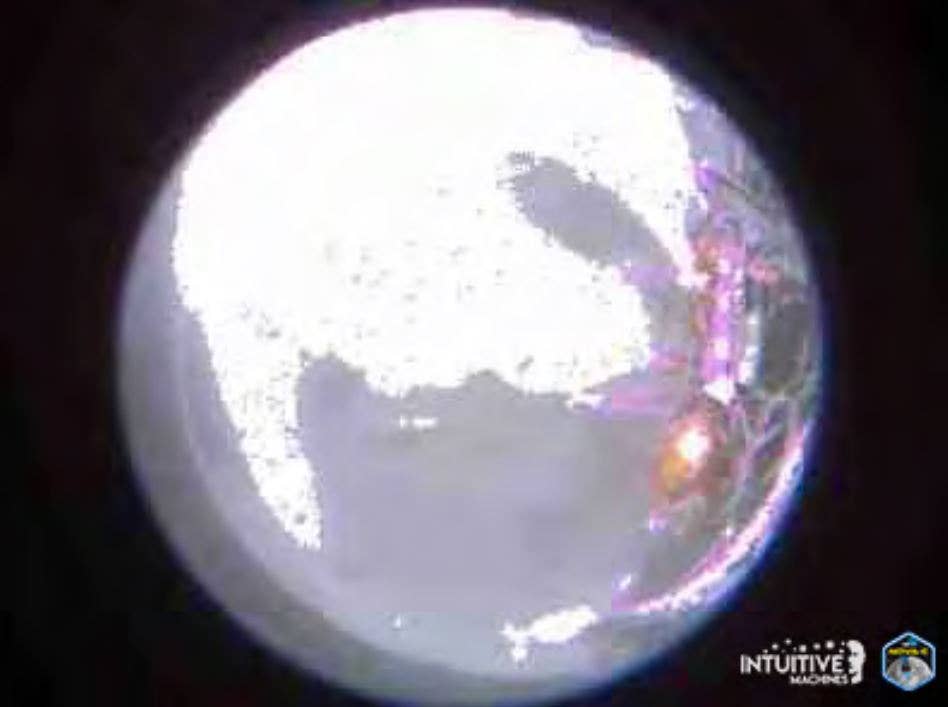‘Odysseus’ Transmits First Lunar Landing Images
Intuitive Machines’ Nova-C lander establishes the southernmost landing site while maintaining communication with Earth, the company said.

New photos released by Intuitive Machines and NASA show Odysseus’ descent and confirm its location on the moon’s surface. [Courtesy: Intuitive Machines]
Intuitive Machines' autonomous lunar lander Odysseus has established the southernmost landing site on the moon, while also maintaining communication with Earth, the company said Monday.
New photos released Monday by the Houston-based aerospace company and NASA show Odysseus' descent and confirm its location, days after the Nova-C lander completed its seven-day, 600,000-mile journey, softly landing in the South Pole region of the moon around 6:23 p.m. EST Thursday.
While Odysseus landed successfully, flight controllers said Friday that as it descended a foot was caught in the surface, tipping it over on its side.
"Odysseus continues to communicate with flight controllers in Nova Control from the lunar surface," Intuitive Machines said in an IM-1 mission update Monday. "After understanding the end-to-end communication requirements, Odysseus sent images from the lunar surface of its vertical descent to its Malapert A landing site, representing the [farthest] south any vehicle has been able to land on the Moon and establish communication with ground controllers.
- READ MORE: The 'Odysseus' Has Landed
"As part of Odysseus’ descent on to the lunar surface, Intuitive Machines hazard relative navigation algorithms detected nine safe landing sites within the targeted South Pole region, which is an area that contains permanently shadowed regions that may be rich in resources, including water ice that could be used for future propulsion and life support on the moon."
Two days after landing, NASA's Lunar Reconnaissance Orbiter (LRO) spacecraft photographed Odysseus' landing site as it passed over it at an altitude of about 56 miles.
"Odysseus marks the first successful soft landing of NASA’s CLPS (Commercial Lunar Payload Services) initiative and the first time that new NASA science instruments and technology demonstrations are operating on the moon in more than 50 years," NASA said.

Sign-up for newsletters & special offers!
Get the latest FLYING stories & special offers delivered directly to your inbox






